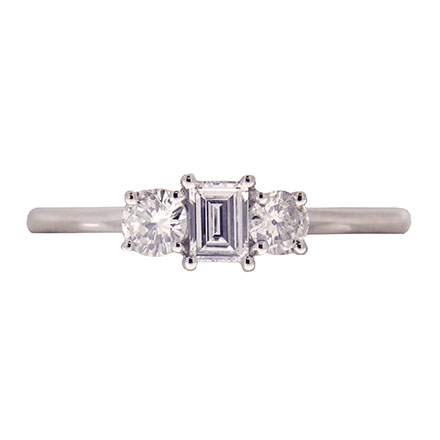Ring settings have changed so much over time that the styles popular twenty years ago and the ones that are the favorites of today are very different from one another. Over time, these styles have accumulated to create a colossal variety of ring settings. Although it would be wrong to say that each of these styles have stayed to rise to a place of popularity at some point, but there sure are some that have stood the test of time to become the top picks. In this article, I’ll discuss the 4 most popular ring settings in details.
4 Prong Setting
Arguably the most spectacular and consequently the most popular ring setting of all time, a 4 prong style is a classic setting that is the hallmark of solitaires. Although 6 and 8 claw settings are marching fast towards the spotlight, the 4 prong setting has secured a permanent place in the solitaire section since its emergence. This setting features 4 prongs that converge to create a claw or the seat of the stone. It is a markedly square look, but a 4 prong setting works great with round-cut stones too.
Halo Setting
Second in popularity is the halo setting, which may not bear the simplicity of a 4 prong setting, but is aesthetically meaningful in its own way. A halo setting features a central stone encased by a series of smaller stones that form a halo-like border around it for a greater effect. The halo adds to the sparkle of the center stone giving the ring a larger and heavier appearance.
Channel Setting
Channel setting is a very modern style of setting mostly seen in rings in the contemporary genre. In this setting, the stones are placed between two upright metal walls, often in series to create a continual effect of shimmer and sparkle. A setting specifically fashioned for small stones, a channel setting is a preferred technique for inlaying bands with gems.
Three-Stone Setting
The three-stone setting is a very common style in the engagement ring category. Three stones of two different sizes, one at the center and other two on the sides are placed in sequence to create a three-stone style. The setting uses three sets of four-claw prongs to secure the stones in the ring. Normally, the stones at the side outweigh that at the center.






